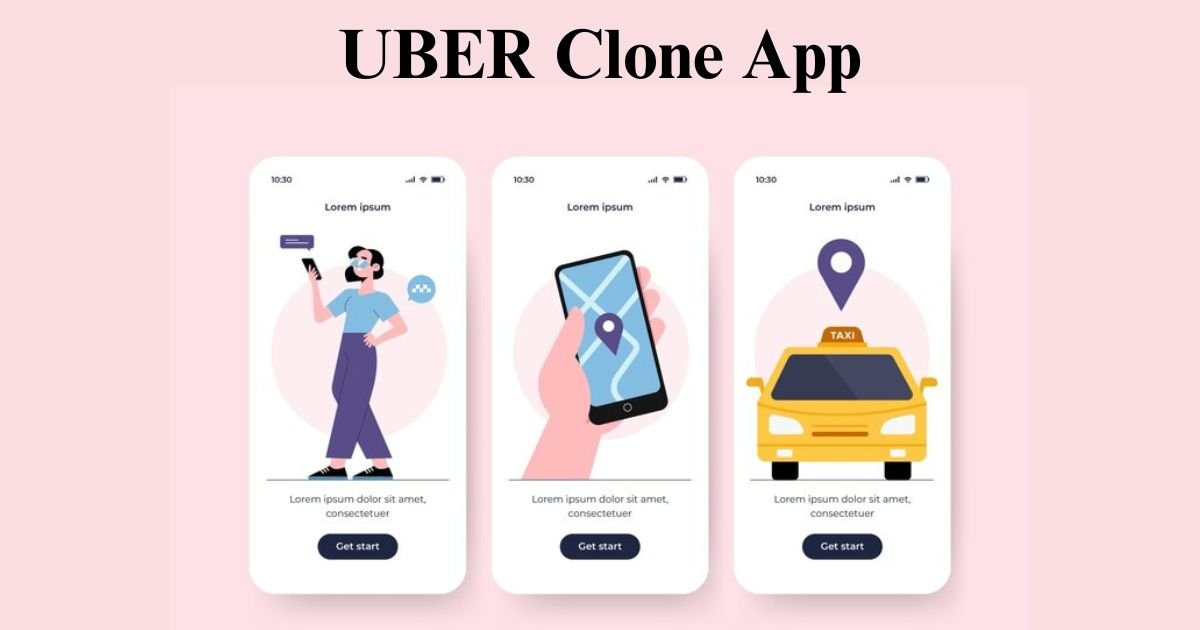Ride-hailing platforms have entirely transformed the manner in which people travel between different locations. Businesses around the world seek to exploit this profitable industry through the creation of the Uber clone app due to the successful leadership of Uber. Developing an effective Uber clone app requires more than duplicating characteristics since it needs market comprehension alongside essential functionality integration user-friendly design, and regulatory compliance protocols.
A white-label Uber application development requires specific elements that prospective builders need to analyze carefully. The selection of technology stack alongside driver and rider security needs to be treated as vital elements during development. Your white-label Uber clone development necessitates attention to these main points for success.
Understanding the Ride-Hailing Market
Market analysis of your target region must take place before starting development for the ride-hailing system. The achievement of your Uber clone application depends intensely on market demand conditions along with competitive pressures together with your chosen price strategy and suitable local rules.
- Market Research provides an understanding of how customers behave along with peak hours and their preferences to develop essential features for the app.
- The analysis of competitor ride-hailing programs should concentrate on detection zones where services fall short and the development of enhanced user interfaces.
- The app should define its revenue approach through commission and subscription fees together with surge pricing mechanisms.
Choosing the Right Business Model
The development of on-demand ride-sharing services requires a solid business model as its fundamental structure from any on-demand app development enterprise. The following essential models need consideration when building an Uber clone copy.
- Users of this model search for trips from drivers who work independently just like in Uber or Lyft.
- Corporate ride services allow businesses to provide employees with ride-sharing programs that establish safer transportation benefits.
- Through its carpooling model, the system lets various travelers sharing the same destination team up for transportation, which decreases expenses together with environmental impact.
- Subscription-Based Rides: Users pay a fixed monthly fee for a certain number of rides, providing them with predictable pricing.
Choosing the right model depends on your target audience, operational costs, and long-term goals.
Essential Features of a Successful Uber Clone App
A white-label Uber app must offer seamless functionality to both drivers and riders. Here are some must-have features to enhance user experience:
1. User-Friendly Interface
A clean and intuitive interface ensures that users can book rides effortlessly. The design should focus on simplicity, with easy navigation and clear instructions.
2. Real-Time GPS Tracking
GPS integration is a fundamental feature for any Uber clone app. It helps users track their rides, estimate arrival times, and ensure safety.
3. Secure Payment Gateway
A variety of payment options, including credit/debit cards, mobile wallets, and cash, make transactions convenient. Secure encryption is crucial to protect user data.
4. Driver & Rider Authentication
Implementing a thorough verification process for drivers, including background checks, vehicle inspections, and license verification, enhances trust. Riders should also verify their identity to ensure security.
5. Automated Fare Calculation
The app should have a transparent fare calculation mechanism that considers factors like distance, waiting time, surge pricing, and toll charges.
6. In-App Chat & Call Support
Providing seamless communication between drivers and riders through in-app chat or calls eliminates confusion about pickup locations and ride details.
7. Rating & Review System
A robust feedback system encourages quality service by allowing both drivers and riders to rate each other. This ensures a safer and more reliable ride experience.
8. Ride Scheduling
Offering the option to schedule rides in advance gives users flexibility and increases driver engagement.
9. Multi-Currency & Multi-Language Support
For businesses expanding globally, integrating multiple languages and currency options improves accessibility and inclusivity.
10. Emergency Button & Safety Features
A dedicated SOS button allows users to contact emergency services or share their ride details with trusted contacts, ensuring safety during rides.
Choosing the Right Technology Stack
The performance of your white-label Uber clone depends on the technology stack you choose. The development process involves several technical aspects, including:
- Mobile App Development: Choose between native (Swift for iOS, Kotlin for Android) or cross-platform frameworks (Flutter, React Native).
- Backend Development: Use robust backend frameworks like Node.js, Django, or Ruby on Rails to handle high traffic efficiently.
- Scale-based Database Solutions MongoDB PostgreSQL and Firebase provide smooth data storage together with retrieval capabilities.
- Reliable cloud Hosting is provided by AWS along with Google Cloud and Azure for maintaining continuous application performance.
Choosing the correct tech stack allows your Uber clone app to expand its functionality while improving security measures and delivering better performance, including future development potential.
Legal & Compliance Considerations
Compliance with legal regulations in ride-hailing businesses ensures both operational continuity and avoidance of penalties. Some key legal aspects include:
- Driver-partner contracts must include precise definitions of both earnings and liabilities and driver obligations.
- Insurance coverage should include protection for drivers and passengers through appropriate policies for accidents that might occur during their ride.
- Businesses in the local transport sector should follow all government laws related to taxi licensing procedures while implementing background checks for drivers and establishing fair fare pricing.
- Agree to follow GDPR along with CCPA and compatible data protection laws that provide user information security.
How an On-Demand App Development Company Can Help
To develop a high-performance Uber clone system, you must possess expertise in three areas, including user interface and experience design, as well as backend development and security implementation. An experienced on-demand app development company assists project development through four primary methods:
- The company will perform market research to determine customer requirements for the upcoming application.
- A company should modify features according to the requirements of its distinctive business operations.
- The development team should use flexible technology systems to support future business growth.
- Industry standards, together with regulations, must be achieved by the development process.
Final Thoughts
Creating a successful Uber clone app means more than imitating Uber’s features so developers must design an advanced platform that delivers excellent efficiency and usability to their target customers. The application’s achievements depend on every minor implementation detail starting from research and selection of business models to security protocols with regulatory adherence.
Expert guidance from a development company, together with the proper technology selection, leads to white-label Uber clones that provide secure rides and generate profitable results.
You should invest in a powerful Uber clone to enter the ride-hailing business at this strategic moment because it will distinguish you from the competitors.



